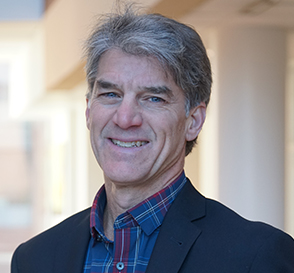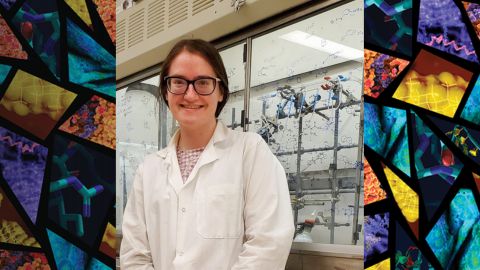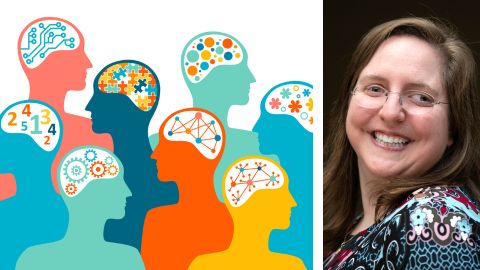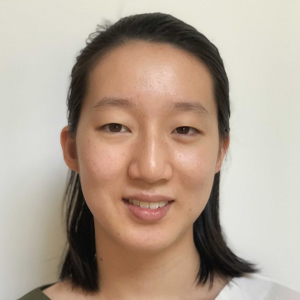Meet Paul Shapiro
Paul Shapiro has spent a lot of time around manure. Specifically, shoveling it at his parents’ farm near Madison, Wisconsin, where he also milked the cows twice a day, seven days a week, during his childhood. He credits these early experiences with developing his strong work ethic that aids him in scientific research.

“I’m not smart enough to be a farmer,” he said, laughing, citing the wide range of knowledge and mechanical skills needed to run a farm.
Instead, he studied bacteriology during his undergraduate years at the University of Wisconsin–Madison. To earn tuition money, he joined Bill McClain’s RNA research lab as a technician, starting off washing the glassware and reusable pipettes and later moving up the ranks to run experiments.
Now a professor at the University of Maryland School of Pharmacy and an associate editor of the Journal of Biological Chemistry, Shapiro studies mitogen-activated protein kinases, or MAP kinases. These enzymes are involved in signaling cascades and regulate a range of functions including cellular mitosis, motility and survival.
When the complex pathways associated with MAP kinases go awry, inflammation and oncogenesis can occur. Of these proteins, Shapiro has focused on the extracellular signal-regulated kinases 1 and 2 and the p38 family. One p38 modulator that Shapiro and colleagues described in a recent paper is now in clinical trials to alleviate acute respiratory distress syndrome.
Outside of the lab and his role as an associate editor at JBC, he enjoys staying active by biking to work and taking long hikes, with one highlight being a rim-to-rim hike of the Grand Canyon. Shapiro completed the Boston marathon three times, in 1987, 1988 and 2019, and described his final round as both “quite painful” and “a great experience.”
Paul Shapiro spoke to ASBMB Today about kinases, collaborating with biotech companies and advice for students. This interview has been edited for style, length and clarity.

You’ve researched mitogen-activated kinases for several decades now. Why do you think these proteins are important to study?
Shapiro: They're ubiquitous. They're in basically every cell, and they're highly complex in their regulation. I think the most important thing is that, when they become over-activated, they can drive disease. A lot of proliferative disorders like cancer have upregulation of these protein kinases and so there are a number of efforts trying to block this activity in disease.
We've come at blocking activity from a different angle. Instead of blocking all the kinase activity, which is the traditional way to do it, we inhibit their ability to regulate specific substrates.
But these enzymes have so many different functions that could be pro-oncogenic or antioncogenic. They might have negative feedback loops, so you don't want to be shutting off allactivity. Our approach was to use structural biology and computational biology to identify novel small molecules that modulate the activity but do not shut all the activity off.
Your lab recently published an anti-inflammatory modulator of p38 signaling that improves acute lung injury outcomes in mice. How did you approach this work?
Shapiro: p38 inhibitors have been around for more than 30 years, but none of them have made it to the clinic. There's a lot of interest in these inhibitors because p38 is involved in inflammatory disorders. We thought, ‘Can you modulate its activity, but not shut all its activity off? Can you modulate the pro-inflammatory signals and preserve the anti-inflammatory signals?’ The compound that we developed is now in clinical trials to treat acute respiratory disorders and improve lung function.
We're optimistic that they're not going to have the toxicity and the side effects of the previous class of p38 inhibitors, which target ATP binding and shut off basically all the activity of the enzyme.
Tell me about your collaboration with GEn1E Lifesciences.
Shapiro: Once we identify compounds with interesting biological activity, the first thing that we do is file an invention disclosure. The university has an office of tech transfer where, if you have an idea you think could be developed into a therapy, they meet with you and decide if the University wants to pursue this idea.
We have a very good tech transfer office. They're very supportive, and when they make the decision to go forward, it involves some expenses, like legal expenses to apply for provisional patents, and then eventually get a full patent on these compounds. We've got, I'd say, a dozen different patents covering the structures of these p38 modulating compounds. Then the university advertises these inventions to the pharmaceutical industry, or to other companies who might be interested.
That's where GEn1E came in. They looked through the portfolio of inventions that the University held, and now they have exclusive rights to develop and move (the p38 modulators) toward clinical translation. Basically, the university owns the patent and then the company provides resources to develop the intellectual property.
So, that's where we're at right now. The partnership with Gen1E has been very helpful in translating a basic science idea into a clinical application, because I don't have the resources to do all the preclinical pharmacology and toxicology testing. That takes a lot of resources, and the partnership with the company really helps facilitate that.
When your lab was developing these p38 modulators, did you think they would be used clinically?
Shapiro: My original goal was to understand signaling mechanisms, develop tools to manipulate kinase signaling and understand what that signaling does in a cancer cell or an inflammatory response. I didn't really expect to be part of the development of a product or a compound that could get into a human being. So, that was a bit of a surprise, a pleasant surprise. That is kind of the goal that we should all have when we're trying to help society and help treat disease.
But it wasn't just me. There are several of my colleagues on the patents and who have helped move the research forward. I have clinical colleagues, medicinal chemist colleagues and computational biologists. It really is a team effort, and that's the exciting part. That's what I like about the science; it's very collaborative. I learn so much every day, even after many years. When you're young, you think you know everything, but when you get old, you realize there's a lot to learn.
You've been working in academia for several decades. Do you have any moments that stand out?
Shapiro: I'm a big believer in training the next generation of scientists. I was department chair for a few years, and some of my biggest accomplishments were hiring new assistant professors. To see them become successful has been very rewarding. Seeing my own students getting jobs they enjoy and being successful is also very rewarding.
I'm a big proponent of believing that (being a professor) is the best job you can have. Maybe it's not for everybody, but you get to create your own ideas. If you can get funding to do it, even better.
As a part of my role at the Journal of Biological Chemistry, I work with the early career review committee to help bring in new researchers and help them gain experience in reviewing manuscripts and recognizing rigorous science. So, I think that's probably one of the biggest highlights, besides the discoveries and moving compounds into clinical trials.
Are there lessons from your mentors that you now try to pass down to your trainees?
Shapiro: I always encourage my students to try to read as much as possible about a topic. Read, read and read. Read not only about the science, but read for fun, too. Read the literature and read what the lab has been publishing to understand what they are doing. That will help you formulate new ideas.
If I could go back 20 years, I would learn more about bioinformatics and how to use computational tools to integrate large data sets. I think that's going to be an important aspect, too. I may be too old to become proficient in artificial intelligence and machine learning, so I'm going to collaborate with people for that.

Enjoy reading ASBMB Today?
Become a member to receive the print edition four times a year and the digital edition monthly.
Learn moreGet the latest from ASBMB Today
Enter your email address, and we’ll send you a weekly email with recent articles, interviews and more.
Latest in People
People highlights or most popular articles

In memoriam: Jeffrey Cameron
He was an associate professor of biochemistry at the University of Colorado Boulder and co-founder of the biotech company Prometheus Materials.

Finding a symphony among complex molecules
MOSAIC scholar Stanna Dorn uses total synthesis to recreate rare bacterial natural products with potential therapeutic applications.

Sketching, scribbling and scicomm
Graduate student Ari Paiz describes how her love of science and art blend to make her an effective science communicator.

Embrace your neurodivergence and flourish in college
This guide offers practical advice on setting yourself up for success — learn how to leverage campus resources, work with professors and embrace your strengths.

Survival tools for a neurodivergent brain in academia
Working in academia is hard, and being neurodivergent makes it harder. Here are a few tools that may help, from a Ph.D. student with ADHD.

Quieting the static: Building inclusive STEM classrooms
Christin Monroe, an assistant professor of chemistry at Landmark College, offers practical tips to help educators make their classrooms more accessible to neurodivergent scientists.

